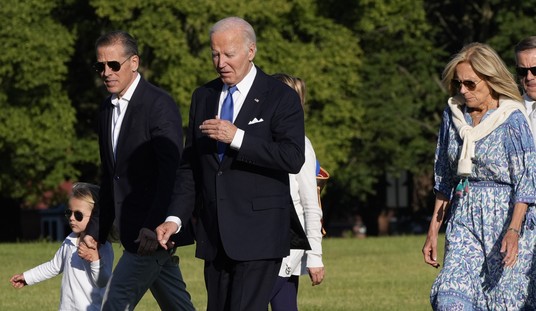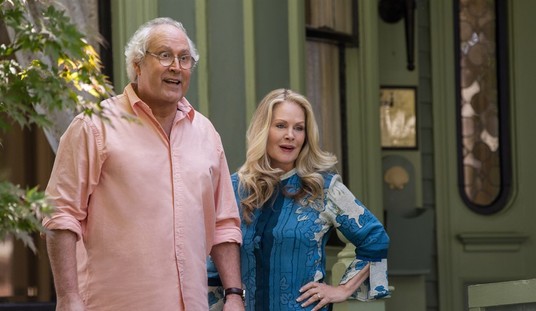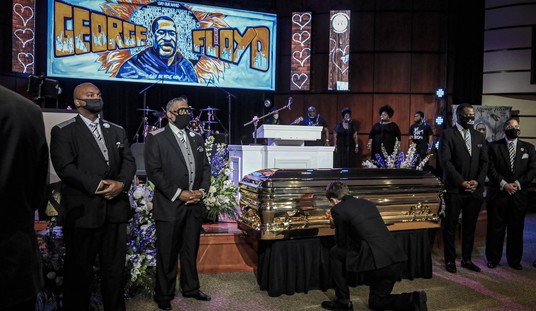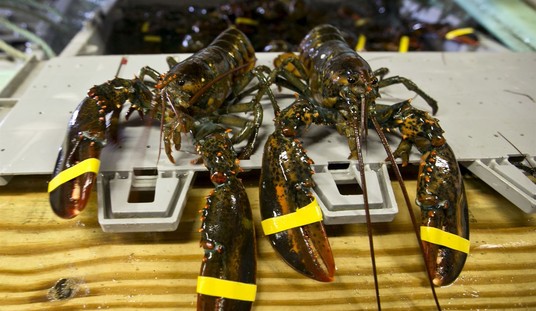Today, in Part Two, I discuss the background of the entire Magnitsky affair, as set out in Browder’s book Red Notice. It’s a tale of a hero who uncovered a huge fraud on the Russian government — only to be arrested and tortured for it.
THE BACKGROUND
The story begins with Bill Browder, a finance guy who was interested in emerging markets in Eastern Europe and Russia. He made millions buying shares in Russian companies that the government sold at a fraction of their true value. He made still more money by exposing the actions of corrupt oligarchs who were stealing from companies in which his fund had an ownership stake.
Everything was going great for Browder. He was a multimillionaire with a new attractive Russian wife. Then it all changed in 2005. Upon returning to Moscow from a trip to his home in London, Russian authorities detained him in immigration for hours without explanation, let him sweat it out overnight without food and water, and then dumped him on a plane back to London. He was told he was a threat to national security.
Authorities then raided offices of holding companies connected to Browder’s fund, and seized corporate documents with seals and signatures of the corporate founders. The justification for the raids was trumped-up: a claim of underpaid taxes that was disputed by the actual tax authorities, who said the companies had actually overpaid their taxes. But the raids allowed authorities to seize the sort of documents you would need if you wanted to change the ownership of the companies.
Browder, working with a team of lawyers including tax lawyer Sergei Magnitsky, learned that the ownership of the companies had indeed been transferred to Viktor Markelov, a man with a manslaughter conviction, and two other criminals who had been granted an early release from prison by Russian authorities.
But the thieves and criminals who had stolen Browder’s companies, using documents that had been seized by police, had a problem. Browder had long since pulled all assets from these companies. For a while, Browder believed that whoever had stolen his companies had done it all for nothing — that they had no way to profit from the theft of the companies.
But Browder was wrong. The thieves had concocted a very clever scheme involving tax fraud. If you prefer to see things in video form, the scheme is described in this video, which was produced before Magnitsky was killed:
Here’s how the tax fraud scheme worked: the thieves had filed phony lawsuits against all of the holding companies, based on forged contracts. The thieves hired lawyers who pretended to represent the interests of Browder’s companies, but who instead affirmed the validity of the fraudulent claims against those companies. In this way, bogus multi-million dollar judgments were secured against Browder’s companies. Since Browder had already taken the companies’ assets out of Russia, these phony judgments could not be collected from the holding companies. But the new owners had a different scheme in mind.
Magnitsky, the tax lawyer, figured out the scheme. He learned that the amounts of the judgments were for the precise amounts of profits that the companies had earned each year. Now each company had a new liability exactly matching the amount of their annual profits. Their new profits for each year were exactly zero, after the phony judgments were applied against the profits.
This meant that the new owners of the companies could apply for a tax refund. Their companies had overpaid their taxes! And they claimed that all the taxes the companies had paid on their profits should be “returned” to them. Sure enough, on Christmas Eve, 2007, the tax “refund” was processed. The total amount of loot stolen by these thieves was $230 million. It was the largest tax refund in Russian history, and was granted without a single question asked — three days after the application for the tax refund had been filed.
The record-setting tax refund was processed in record time by two tax offices, one run by a woman named Olga Stepanova. The money was wired to a bank account at a small bank called the Universal Savings Bank, owned and controlled by a man named Dmitry Klyuev. Weiss, the author of the recent piece on Veselnitskaya, laid out the money trail in this fascinating and detailed piece in the Daily Beast in March 2014, which named the co-conspirators, including tax office head Stepanova and recipient Klyuev:
The conspirators allegedly included the heads of Moscow Tax Offices 28 and 25, Olga Stepanova and Elena Khimina, respectively; Klyuev’s own attorney, Andrey Pavlov; and an Interior Ministry official, Major Pavel Karpov, who had previously investigated Klyuev for attempting to steal $1.6 billion worth of shares of a profitable Russian iron ore company. (Klyuev received a two-year suspended sentence in that case.)
Weiss lays out the damning actions of the co-conspirators after the $230 million fraud was accomplished on Christmas Eve 2007:
Karpov, Pavlov, and Pavlov’s wife vacationed in Istanbul on New Year’s Day 2008. Days later, the Pavlovs flew to Dubai where they met Klyuev, Stepanova and [Stepanova’s husband Vladlen] Stepanov. The husband-and-wife accountancy team reportedly drew on funds from their Swiss bank account to buy $6 million worth of luxury real estate in artificial archipelago Palm Jumeirah. And please keep in mind that, according to Russian Untouchables, the Stepanovs’ combined declared income in 2008 was just under $40,000.
Weiss cites court documents that show that these same conspirators had previously been involved in a similarly fraudulent tax refund scheme worth $107 million involving a company called Renaissance Capital. After that scheme was carried out, Weiss reports,
Klyuev, Stepanova and Stepanova’s husband Vladlen Stepanov all went on holiday together to Dubai, as plane records obtained and published by Russian Untouchables demonstrate. From there, Klyuev and the Stepanovs traveled to Switzerland, where the husband-and-wife team reportedly kept deposits at Credit Suisse in the names of their offshore shell companies. They all returned to Moscow on the same flight. Karpov, Pavlov and Pavlov’s wife, Yulia Mayorova, meanwhile, took a five-day trip to London.
Browder has documented that the officers behind the raids on Browder’s holding companies, Artem Kuznetsov and Pavel Karpov, ended up living extravagant lifestyles on very meager salaries. Kuznetsov’s parents ended up with fancy condos and other land worth $3 million, despite a combined income of only $4500 per month. Artem Kuznetsov’s wife had a Land Rover worth $131,000 and a new Mercedes worth $81,000. Kuznetsov’s wealth was detailed in this video released by Browder in 2010:
Browder writes that Kuznetsov “made more than thirty trips to eight different countries, including Dubai, France, Italy, and the United Kingdom.” According to the above video, he flew to Cyprus by private jet and stayed in a five-star hotel. Browder writes that Kutnetsov would have to work for 145 years on his salary (about 600 Euros a month) to pay for the assets owned by his family.
The other official involved in the seizure of corporate documents from Browder, Pavel Karpov, was an equally extravagant spender despite a small income. Browder writes in his book that Pavel Karpov had traveled to “the United Kingdom, the United States, Italy, the Caribbean, Spain, Austria, Greece, Cyprus, Oman, Dubai, and Turkey.” He ate at expensive restaurants in Moscow and partied at the best nightclubs, posting pictures on social media of himself with various scantily clad, attractive women. This video contains some of the details of Karpov’s wealth. The beginning of the video re-tells much of the story that the Kuznetsov video shows, so I am beginning the video for you at 1:48:
According to the video, Karpov’s pensioner mother had a $930,000 condo, other valuable pieces of land, a $47,000 Audi, and a $41,000 second-hand Porsche, despite a monthly income of only $500. Karpov, with a declared income of only $535 a month, somehow managed to drive a $72,000 Mercedes (paid off in one year) and a $126,000 Porsche. Altogether, the Karpov family’s assets were over $1.3 million.
The same pattern followed with Stepanova. Browder released this video that similarly described her astounding wealth despite a small official salary. You have to watch the video to believe it. The amounts of money involved are staggering — even compared to the luxurious lifestyles of Karpov and Kuznetsov. The video accuses the couple of having nearly $39 million in undeclared, illicit income:
As an aside, it’s interesting to note that both officers involved in the fraud — Artem Kuznetsov and Pavel Karpov– visited Cyprus, which is “a Mediterranean island nation often used for Russian money transfers.” It was reported in March that a Cyprian bank was looking into possible money-laundering by Paul Manafort, who is now a target of Robert Mueller’s investigation into possible misconduct by Trump advisers connected to Russia.
Tomorrow, in Part Three, I will discuss what Sergei Magnitsky did when he learned about this scheme — and how he suffered as a result.
This is Part Two of a six-part series on the death of Sergei Magnitsky, what he uncovered before his death, and how it all relates to Natalia Veselnitskaya, the Russian woman who met with Trump Jr., Manafort, and Jared Kushner in June 2016. The springboard for the series of posts is this Michael Weiss article about Veselnitskaya and how she is connected to the Magnitsky case.
In Part One, I introduced the series and Weiss’s conclusions.













Join the conversation as a VIP Member